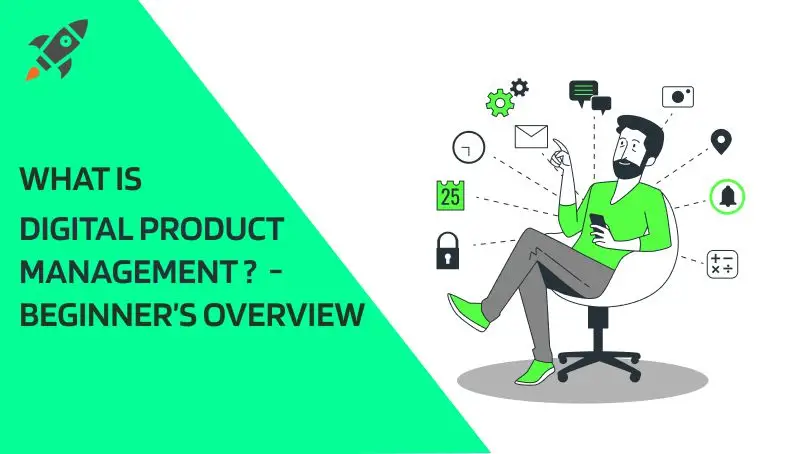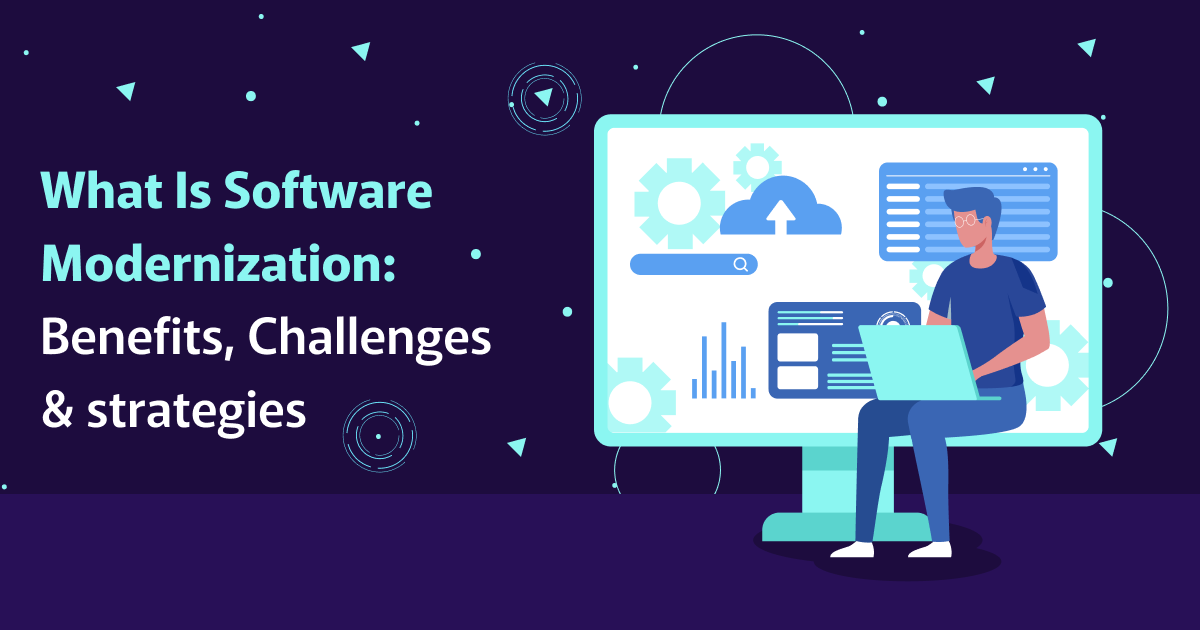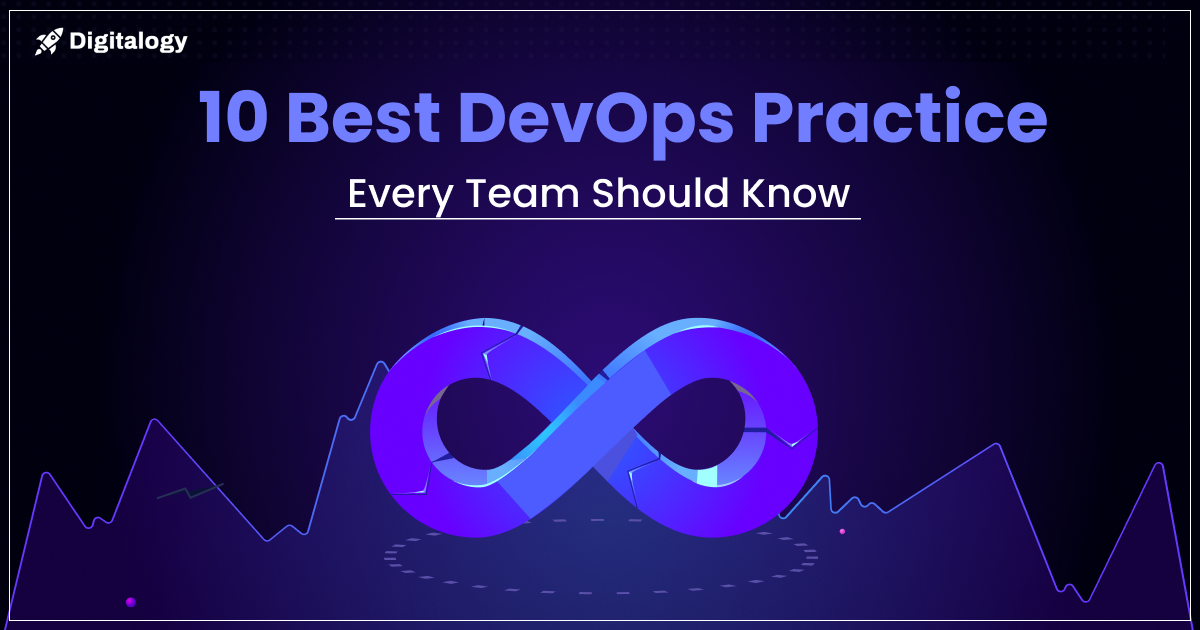In this guide, you will get detailed insights into the important aspects of digital product management.
Have you ever thought about how the different apps available in the market got made? Who made decisions relating to the functions and features of digital applications?
Well, that is exactly where the role of Digital Product Managers comes into the picture and the process that involves bringing digital products from the idea generation stage to the market is referred to as Digital Product Management.
The demand for digital products has increased a lot in recent times, especially after the Covid-19 pandemic. Therefore, knowing about the digital product management concept is vital now.
What Is Digital Product Management (DPM)?
Digital product management refers to the strategy of observing, defining, developing, refining, and delivering digital products. Some of the prominent examples of digital products include websites, mobile apps, operating systems, and programming packages.
What Is The Aim Of Digital Product Management?
The core aim of digital product management is to ensure optimum customer satisfaction and increase the sales of businesses.
Who Are Digital Product Managers?
Digital Product Managers are responsible for directing the digital product lifecycle, right from the idea conception stage to the launch of the product and beyond. They also refine the already existing digital products in the market following the same process.
Role of Digital Product Managers
- Carry out in-depth research about the customer, market, and competitors.
- Analyze the products and the target customers of the product.
- Create a roadmap for the development and maintenance of digital products.
- Collaborate with product teams in order to test the capabilities of the products.
- Managing the product budget.
- Overseeing the Marketing and Sales department.
They take the help of various project management tools throughout the process.
Digital Product Management Vs. Non-Digital Product Management
Now that you have a brief understanding of digital product management, it is time to explore how it is different from non-digital product management.
Managing non-digital products and digital products are fundamentally the same. However, there exist certain differences between the two. One of the main differences is in terms of availability of data.
In comparison to non-digital products, managers can easily get more data relating to digital products. Capturing user data in real-time is simple and easy with digital products. Due to access to a wealth of data, digital product managers get to learn a lot of new information regularly.
It also allows the managers to make the required modifications to the products with much ease. Through the different metrics, the managers can find the pain points of the users of the digital products. With necessary improvements, addressing the issues and delivering better customer experiences becomes easy.
However, that is not possible in the case of non-digital products. In order to understand the pain points of users of non-digital products, research can be carried out. Data needs to be collected manually. This can take a lot of time and effort. Moreover, the accuracy of data is still not guaranteed.
What Are The Key Ingredients For Successful Digital Product Management?
Successful digital product management is ensured when the digital products are delivered to the market, resulting in optimum customer satisfaction and higher revenues.
It requires the alignment of a number of components. The key components that are vital for successful digital product management are listed below.
- Setting up of Vision and Roadmap of the Digital Product
The digital product vision states the ‘what’ and ‘why’ aspects of the product. It highlights the core mission of the product and what it wants to achieve in the long run. The roadmap shows the strategy and timeline that will be followed in order to realize the vision of the digital product.
- Conducting Market Research
To ensure the successful management of digital products, it is important to carry out detailed market research. It includes understanding the need for the product among the potential users and making forecasts relating to the demand for the digital product.
- Competitor Landscaping
For the success of digital products, the managers also focus on competitor landscaping. They identify and research the potential competitors of digital products.
Competitor landscaping allows managers to better understand the capabilities of existing products. It also helps in analyzing the price points of digital products.
- Resource and Budget Allocation
In order to ensure successful digital product management, proper allocation of resources and budget is vital. It involves assigning the right task to the right individual. It also includes the use of the right tools and technologies for the development of digital products.
- Alignment of Teams
For the development and management of products, specific product teams need to be formed. It is important to align the teams with the targets and goals of the products.
- Product Development and Go-to-market Strategy
The digital product must be developed on the basis of user interface design to deliver exceptional user experiences to the customers.
The successful management of digital products also includes the creation of an appropriate go-to-market strategy to meet the sales and revenue targets effectively.
The alignment of all these components together comprises a successful digital product management process.
What Is Digital Product Management Lifecycle?
The digital product management lifecycle refers to the progression of the digital product through different phases. The stages include idea generation, development and introduction, growth, maturity, and finally, decline.
| In the first stage, the very idea of developing the digital product is conceived. |
| The second stage involves the development of the digital product and its launch in the target market. |
| The third phase involves the growth in the popularity of the digital product in the target market. |
| The fourth phase is the maturity stage, where the digital product reaches the peak limit of sales. |
| Finally, the last stage is the decline, where the popularity and demand for digital products are reduced. |
Which One Is More Important, Product Management or Digital Marketing?
The short answer to this question is that it is impossible for product management and digital marketing to exist independently.
Many wonder whether product management or digital marketing is more important. Both digital marketing and product management coexist.
| Product Management refers to the tactical and strategic activities involved in the development and management of the products. |
| Digital Marketing deals with the marketing of products through different online channels such as websites, mobile apps, emails, and social media platforms. |
Therefore, managing a product is equally important as marketing it. While product management is vital to creating value for the customers, marketing helps in generating revenues for the business.
What Are The Stages of Digital Product Management?
DPM follows a structural process. It consists of 8 important stages. Following the process ensures saving time and money while delivering value to the customers.
Here are the vital steps involved in digital product management. Let’s take a look!
| Customer Analysis |
| The first step is to analyze the customers of the intended digital product. The collection of customer data is at the core of digital product management. In this stage, the potential customers of the product are identified. Information relating to the needs and wants of the customers is collected. Moreover, it is also important to determine the value that the digital product will provide to the customers. The available budget for the project is also identified by the digital product manager in this stage. |
| Schematic Illustration |
| Once in-depth research has been conducted and all vital information is collected, you can move to the schematic illustration stage. This stage involves the creation of sketches and wireframes. It is all about bringing the idea of the product to life on paper. Picturing the idea helps the team members to get a proper understanding of the digital product that is to be developed. It helps in accelerating the speed of the development of digital products. |
| Planning |
| Planning is an important stage. In this stage, the manager determines whether all the essential resources for the development of the digital product are available or not. It also includes assigning different roles to the team members involved in the process of digital product management. A proper plan is laid out that will be a roadmap for the development of the digital product. |
| User Interface Design |
| Once the plan has been prepared, the actual development work starts. Keeping in mind the schematic illustration and user needs, the user interface is designed. This stage emphasizes the design, architecture, and usability of the digital product. In this stage, it is also determined whether the design is easy to use and delivers better user experiences to the customers. |
| Prototyping |
| After the user interface has been designed, a prototype of the actual digital product is created. Prototyping refers to the act of taking wireframes, sketches, and UI designs and converting them into a clickable mockup. The prototype resembles the actual product. The main aim of the mockup is to test the capabilities and usability of the product. It helps in identifying the potential issues that may limit the user experience of the customers. It allows for making the necessary changes before the actual digital product is launched in the market. |
| Programming |
| Once the prototype is created and the usability is tested, the next step is programming or code development. In this stage, appropriate codes are developed in order to add functionality to the digital product. It requires specific technical skills of the experts and a significant amount of time. On the basis of the digital product you are developing, the time and skills will differ. |
| Quality Assurance |
| In order to ensure optimum satisfaction of the customers, it is vital to test the quality of the digital product. This stage involves running a number of tests to check and evaluate the usability and function of the digital product. In this stage, all the potential bugs are identified and fixed to ensure the delivery of quality products to the customers. Quality assurance is at the core of digital product management. |
| Launching, Supporting, and Maintaining |
| Once the quality of the digital product is ensured, the next step is to launch the product in the target market. In this stage, the product goes live and is made available to the customers in the market. Customers can get the digital product through online platforms or from their app stores. It helps in increasing the sales of the business. However, DPM does not end with the launch of the product; there is still more. After the launch of the digital product in the market, it is important to maintain and support the product. The managers are responsible for understanding user perspectives and making continuous changes to the digital product even after the launch. It ensures delivering peak satisfaction to the customers and achieving better revenues. |
Final Words
By now, you must have gained a comprehensive idea of Digital Product Management. The need for DPM has been increasing in recent times. Prioritizing customer needs and following a systematic approach can help in ensuring success in the digital product management process.
If you want to hire cost-effective developers for your Digital Product, consider Digitalogy at your service! Let’s talk now!
FAQs
What are the different examples of digital products?
There are a number of digital products available in the market. It includes mobile apps, various software, IT solutions, and more.
What are the essential skills of digital product managers?
The skills that digital product managers must possess include designing skills, management skills, understanding of user data, and deployment skills. Research and analysis skills are also vital.
What are the roles and responsibilities of digital product managers?
The digital product managers are responsible for understanding the needs of the customers, defining the products, gathering product requirements, creating product development strategies, guiding marketing and sales, and communicating changes.
What is the difference between a digital product manager and a product manager?
The role of both a digital product manager and a product manager is the same. Both are responsible for the development and successful launch of the product in the target market.







